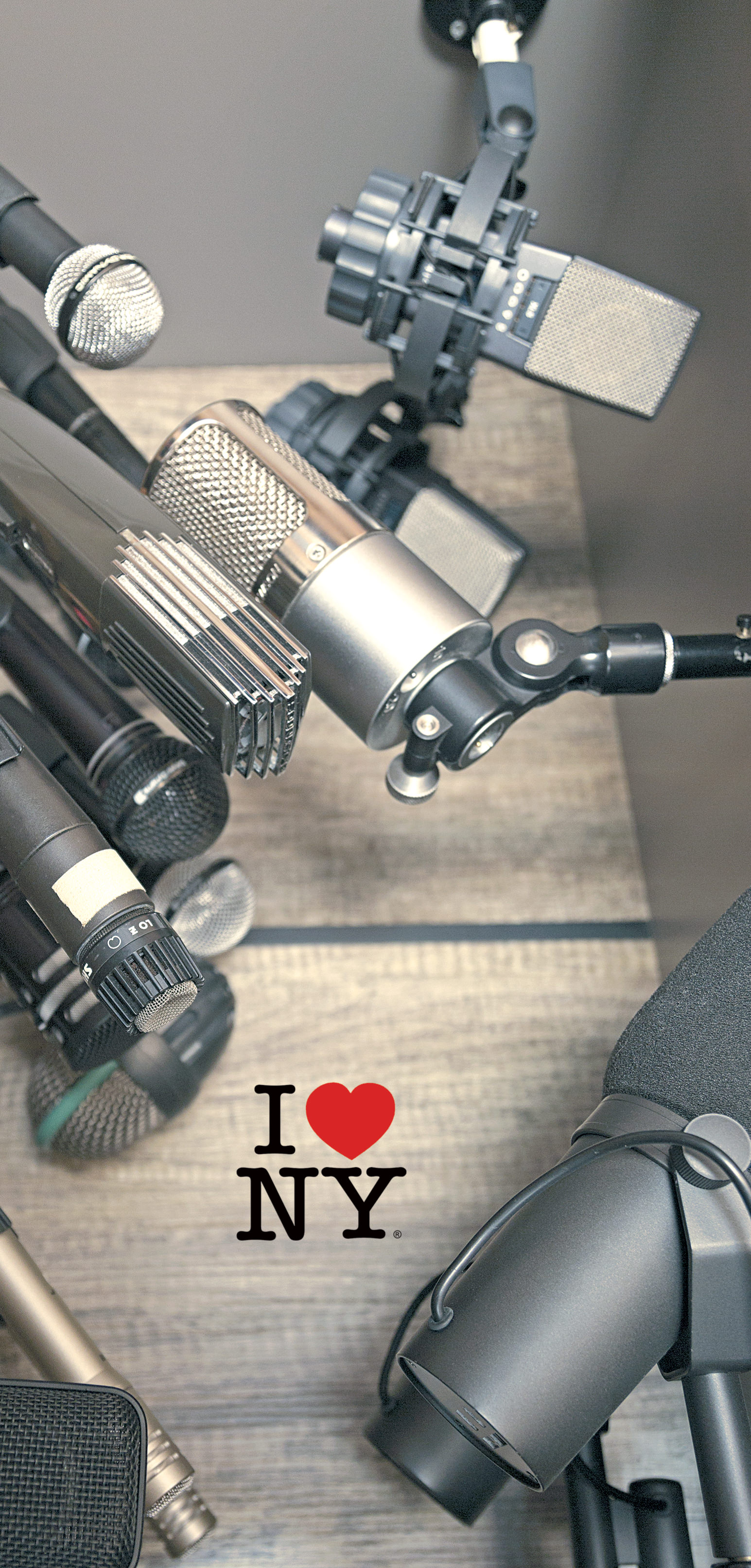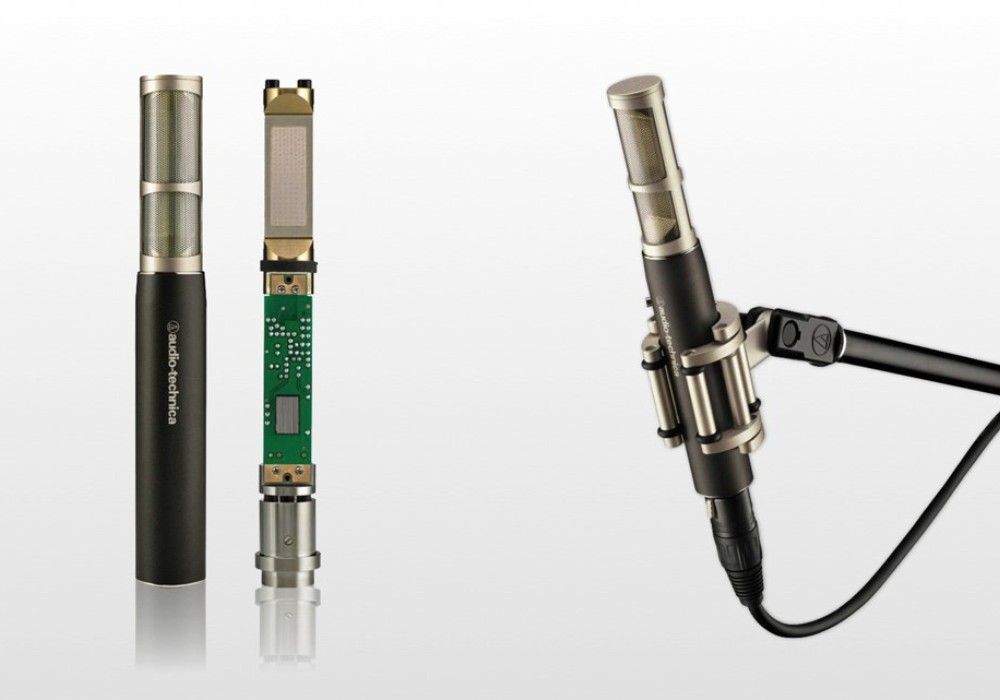In 1947, a young Dr. Heitaro Nakajima was hired by the technical and research division of Japan’s public broadcast house NHK. Although he’d have a long and illustrious career (later spearheading the development of the compact disc), one of his earliest projects wasn’t a complete success. Inspired by a U 47 he’d encountered on a trip to Germany, Dr. Nakajima set out to design a condenser microphone of his own. While his prototype did work, it was a bit too noisy (and featured a celluloid membrane with an unfortunate tendency to catch fire). Nevertheless, Nakajima’s pioneering work inspired another brilliant engineer: Sony’s Kanane Nakatsuru. Using a new polyester film, Nakatsuru developed a quieter, less-flammable microphone that differed in several respects from those being made in Europe.
While large capsules made by Neumann and AKG could achieve multi-pattern functionality by combining the output of two opposing diaphragms, Nakatsuru’s capsule (eventually dubbed the C3) could function as a true pressure omni by sealing, at the turn of a screw, the cavity behind a single diaphragm. The new capsule’s performance was excellent in cardioid as well, and the resulting microphone – the Sony C-37A – rightly became one of the all-time classic tube condensers.
Decades later, as the rest of the world focused near-exclusively on European large-capsule types, David Josephson began refining Nakatsuru’s design to produce modern capsules that extend this lineage. Let’s not overstate the connection though: While most contemporary mic manufacturers hew closely to a handful of iconic 20-century designs, Josephson has never been very tradition-bound. In the new C705, this forward-thinking ethos is readily apparent.
The Josephson turned up a few days ahead of its supporting documentation, so I initially had very little to bias my expectations. The grille was sheer enough to reveal the capsule to be a cardioid-only variant of the above-described type, but few other features gave clues to the mic’s operation. Accessories were likewise limited. The C705 arrived in a cardboard box with only a nylon bag and a slip-on headbasket cover, which was frankly a bit of a relief. Our mics usually live on stands here at the Bunker Studio, and storage space always seems more precious than yet another bulky case full of mic tchotchkes. A mounting yoke is integrated into the body itself, and an internally-suspended capsule provides plenty of isolation from mechanical disturbance.
When a high-end manufacturer wishes to make a product they can price more accessibly, there are two broad ways forward: Either quality must be sacrificed or features must be, and it’s clear that Josephson has chosen the latter course for the C705. It’s a spartan instrument, limited to single-pattern cardioid operation but is otherwise substantially similar to their flagship models. Instead of ensconcing a lesser product in superficially deluxe appointments, Josephson pared back the luxury and engineered every aspect of the C705 to maximize its price-to-performance ratio.
A utilitarian-but-handsome matte finish was chosen, for example, over their customary black chrome. Made by mic stand innovators Latch Lake, the C705’s steel body touts some pretty fancy metallurgy (“ferric nitrocarburizing”) that renders it all but damage-proof. It looks exquisite and will last a lifetime under normal use. Atop this body sits a grill that’s just slightly less revolutionary than the metal foam Josephson uses on their upmarket C715 [Tape Op #78]. A durable steel honeycomb overlays a mesh that’s so fine as to appear translucent, and two body-colored side supports are visibly offset from the plane of the capsule backplate. The latter point is particularly important – headbasket geometry has a massive impact on a mic’s performance, especially off-axis, and Josephson has taken great care to minimize the acoustic impact of its design.
Because my evaluation period coincided with the COVID-19 pandemic (and resultant studio lockdown), I didn’t have the opportunity to audition the C705 on any vocalists other than myself. Matching a mic to vocalist can be an unpredictable pursuit, and one baritone is not enough to get a feel for what a mic has to offer. Nevertheless, it was apparent that the C705 is objectively of high quality and would be worth investigating in this application. Notwithstanding this unfortunate paucity of singing, I was managing to stay busy enough to find an array of other applications in which to put the mic through its paces. While quarantined at home, I’d been recording acoustic, electric, and bass guitars for remote clients, and it was in this capacity that the C705 was first pressed into service.
Compared to an older Neumann U 87 I’d been using, the C705 is somewhat lower in output. Josephson confirmed that the mic’s electronics (Class A FET cascode feeding an active-balanced output) achieve a desired sonic result by leaning a bit more heavily on the preamp for gain. In practice, the output level is quite user friendly. I often reach for the -10 dB pad on the U 87, but never regretted the lack of an equivalent switch here (and had no issues with overloading).
Describing sound with words always feels futile, but my immediate impression of the C705 was that it’s incredibly smooth and refined. The day after receiving it I was tasked with recording an aggressive acoustic guitar part, so I positioned the Josephson and the U 87 head-to-head in front of my wartime-era Gibson Southern Jumbo. While the Neumann relayed an edgy, mid-forward bark, I chose the Josephson. It was silky, open, and gave a better representation of the guitar’s body at this fortissimo dynamic. The next day, on a lighter fingerpicked part, I slightly preferred the way the Neumann articulated the presence and attack. Despite rather pronounced differences, in both instances I’d have happily used either microphone.
On electric guitar, I was even more impressed. Although I often favor a U 67 or U 87 on guitar cab, the C705’s smooth character won me over straight away. On three different setups, I recorded both the C705 and the U 87, choosing the Josephson each time. While there’s plenty of top end, there’s also a silkiness in the presence band that recalls a beautiful ribbon. In particular, the sometimes-too-edgy poke of a ‘58 Danelectro UB-2 baritone was immensely flattered, as were tambourine and tenor banjo (two challenging sources for which I often choose ribbons).
A few days later, I ventured into the studio to track myself playing drums for a different remote project. In addition to my planned mic choices, I centered the C705 over the kit (about four feet above my old Istanbul-made K Zildjian cymbals) and patched into a Neve 31102 preamp/EQ. Upon revisiting the drum tracks the following day, I really began to appreciate the nuanced rendering of the cymbals. A good old K ride is an incredibly complex instrument, with a hand-hammered surface that contributes a dense, chaotic wash. The C705 delivered all of that detail in a markedly effortless manner. Even when played hard, there was never any brashness or sibilance, and an impressive amount of meaty low end was conveyed from the kick and floor tom as well (especially considering the distance). The balance of the whole kit was spot on – if pressed, this single microphone could’ve been the entire drum sound, which is a worthy ideal for a mono overhead.
It may seem unusual to say, but headroom has a sound. Devices that can handle demanding levels without approaching their limits are rarer than you might think, and that quality is a personality as characterful as any euphonic distortion. This is the identity I hear in the C705 – it takes everything in stride. Its capture is beautiful not because of anything it adds to the sound, but because of what it reveals in the sound. This is a nice accomplishment regardless of price, but for a shade over two-and-a-half grand, Josephson has done a noteworthy thing here.
Buy From Vintage King
Buy From Reverb





_disp_horizontal_bw.jpg)